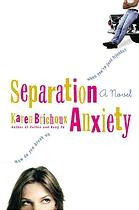
Separation anxiety PDF
Preview Separation anxiety
The San Francisco SPCA Separation Anxiety Dogs are highly social animals. Their genetic programming is to be in a pack with other individuals 24 hours a day, 7 days a week. They can learn to handle being alone for moderate periods of time but, in most cases, it doesn’t come naturally. It’s not surprising then that some dogs develop separation anxiety, a disorder which, in its severe form, can consist of panic attacks: urinating, defecating, frantically scratching and chewing at doorframes, barking and crying whenever the dog is left alone. Separation anxiety is often triggered by either a high contrast situation – months of the owner home all day followed by sudden eight-hour absences – or some sort of life change – rehoming, a stay at a boarding kennel, a death of a key family member or major change in routine. Separation anxiety is both preventable and responds well to treatment. The treatment approach depends on whether the case is mild or severe. The first step is recognizing that dogs with separation anxiety are not misbehaving out of boredom, spite or for fun. Some dogs with separation anxiety are fine when left alone in the car or fine when the owner leaves with slippers on to take out the garbage – they have learned the difference between “long absence” pictures and “short absence” pictures. Others are anxious in all contexts. Preventing Separation Anxiety Puppies and newly adopted dogs are at higher risk to develop separation anxiety if they are smothered with constant attention their first few days home. It is much better to leave for brief periods extremely often so the dog’s early learning about departures is that they are no big deal and predict easy, tolerable lengths of absence: “whenever she leaves, she comes back.” Give your dog both physical exercise and mental work to do. Not only does problem solving increase confidence and independence, it is mentally fatiguing and so increases the likelihood that your dog will rest quietly when he is left alone. Teach him to play hide and seek with his toys, teach him tricks, learn to “free shape” with a clicker (enroll in a SFSPCA course and find out how!), get him involved in a sport like obedience, Flyball or Agility, let him free-play with other dogs, stuff all or part of his food ration into Kong toys, teach him how to play fetch and tug. The more activities and toys are incorporated into his life, the less he will depend on human social contact as sole stimulation. Soften the blow of your departures by providing extremely enticing stuffed toys for him to unpack. See our “Kong Toy Stuffing” handout for tips on improving your technique! The San Francisco SPCA Behavior and Training Department The San Francisco SPCA Mild Separation Anxiety Reduce the contrast between when you’re gone and when you’re home. Refrain from smothering him with affection (see the “mental work” options above to discover other ways of interacting with your dog). Regularly interrupt his shadowing you around the house continuously when you’re home by baby-gating him into another room for short periods. This is like practicing a “semi-absence.” Do many, many extremely brief (1 – 30 seconds) absences with no fanfare on departure or arrival. Increase physical exercise and mental stimulation. Severe Separation Anxiety In severe cases, the informal interventions above will usually not help. What’s needed is a formal program of systematic desensitization to change the dog’s deeply ingrained emotional reaction to departure. The track record of systematic desensitization is excellent for resolving separation anxiety, however it is a huge amount of work for the dog’s caregiver! The key is to observe the dog for the first signs of anxiety during the owner’s usual ritual prior to leaving the house. Most dogs with severe separation anxiety start becoming anxious before the owner leaves. They have learned the “picture” associated with imminent departure and begin panting, pacing, salivating, whining or hiding. In fact, these symptoms of pre-departure anxiety are one of the ways separation anxiety can be distinguished from recreational chewing or behavior problems that result from dogs simply not understanding the rules or lacking outlets for their energy. Once the kick-off point of the pre-departure anxiety is found, treatment begins by repeatedly commencing the ritual at this point but not adding the subsequent steps or leaving, to teach the dog to relax in the presence of the cues that formerly triggered anxiety. Once the dog is relaxed, subsequent steps in the ritual leading up to departure and, finally, real absences are gradually introduced, always contingent on the dog’s continued relaxation. The dog is then, over time, worked back up to normal length absences. The hard part for the owner is that, for the duration of this treatment, the dog cannot experience absences in day to day life that are longer than the point he has reached in treatment exercises. This means essentially that, early on in treatment, the dog cannot be left alone. Owners typically employ dog-sitters, vacation time, doggie day-care and bringing the dog to work to manage this during treatment. [email protected] is an e-mail list created to provide help/support for those who are living or have lived with a SA dog. To join, go to: onelist.com/http://www.onelist.com/subscribe/k9sepanx The San Francisco SPCA Behavior and Training Department
